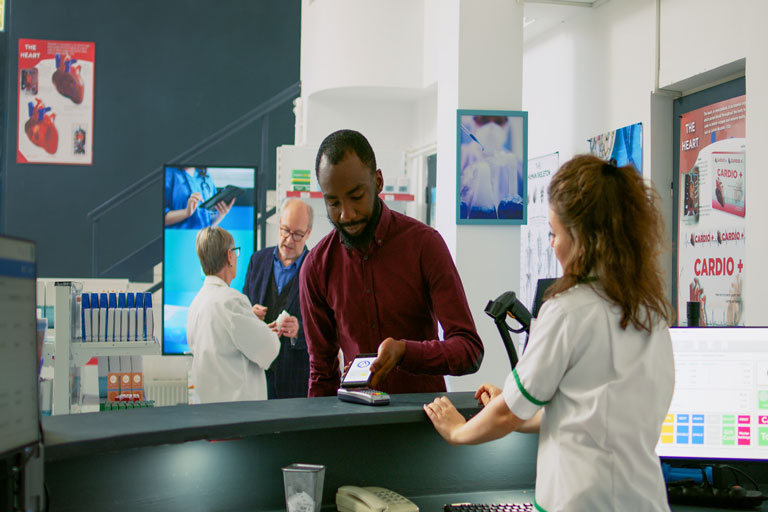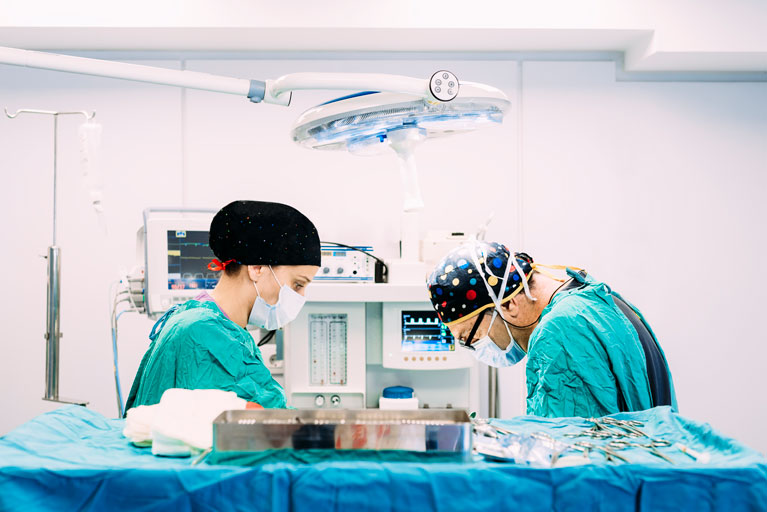Plastic surgery financing is key if you’re looking to accept more patients and turn over more profits this year. You may be wondering what financing options have to do with healthcare. After all, doesn’t health insurance cover all medical expenses? Spoiler alert: it doesn’t. Yes, health insurance typically does cover all or a majority of payments for most doctors’ visits, hospital visits, routine wellness care, and medical devices.
But what health insurance does not cover typically includes cosmetic surgery, elective procedures, off-label drug use, brand-new medical technology, or untested treatments. The patient undergoing plastic surgery or an alternative treatment will most likely have to finance the procedure themselves. For some patients, this could (and should) mean point-of-sale financing.
How Do Patients Typically Finance Plastic Surgery?
First, let’s discuss a few ways patients might typically look into the question of how to pay for plastic surgery or finance an elective procedure. For some patients, the entirety of the procedure will need to be paid out of pocket.
They may not have the cash to cover the cost of it. Or they may not want to use that cash. Either because they don’t want to crack their nest egg or because there will be serious tax repercussions for doing so.
In other cases, their insurance may cover part of the procedural costs, but not the entirety. And still, in other cases, their health insurance might cover the procedure. But not any associated costs like follow-up visits, inpatient care, or outpatient care.
They Use a Personal Credit Card
So for everyone wondering: can you pay for surgery with a credit card? Yes, you can. Here are some typical options along with their drawbacks.
Choosing to put the cost of a medical procedure on a credit card will allow cardholders to make monthly payments. Additionally, it may also help with improving their credit scores (assuming they are making their payments on time). And here’s a tip: some patients can avoid paying interest if they open a new credit line.
The Blue Cash Card from American Express (as one example) offers a zero percent interest rate for 12 months. Along with a $250 statement credit for spending $2,000 in the first six months. For someone exploring cosmetic surgery financing, this could seem like a great option.
And now on to the downside of using a credit card to finance plastic surgery or an elective procedure. Once the honeymoon phase of 0% interest financing is over, other terms apply. Including credit limits and punitive interest rates such as an annual fee. But the annual fee (although annoying) is actually pocket change compared to the interest that will start to accumulate.
There are always balance transfers that a borrower can use to refinance their credit card debt. But most consumers are not familiar with how these work. Alternatively, they might use their so-called surgery card for other daily purchases. Creating a mountain of debt. Which in turn limits their balance transfer options. Especially in today’s tight-fisted lending climate.
Whether it’s because of bad credit or lack of knowledge (or both), they end up just paying down their initial credit card for surgery and lots of interest along with it.
They Open a New Credit Card
In most cases, cardholders use their line of credit for daily purchases and then pay the total bill at the end of the month. The perks of doing this are that credit cards offer perks such as points, cash back, and travel rewards. However, most credit cards have a credit line that simply wouldn’t be enough to cover daily expenses plus a cosmetic procedure.
So, if a patient’s current credit card is maxed out, they may consider opening an account with another credit cards company, such as an American Express Gold card or platinum card, should their credit histories prove worthy. Not only would this supply a patient with additional funds to utilize for their surgeries, but it also may provide a signup bonus at the account opening.
In contrast, this option may not be the best way to go about funding cosmetic surgery or may not even be a viable option for a few reasons. Firstly, plastic surgery financing with bad credit history may prove difficult. If a patient has a poor credit score, they may not be able to secure an “aesthetic credit card” with all the fancy perks and large lines of credit. Enough to cover that facial reconstruction.
Additionally, opening up multiple lines of credit and juggling numerous credit cards can eventually lead cardholders down a dark path with unwarranted excessive spending and outrageous APRs and interest rates. Not to mention yearly credit card fees from the issuer.
They Use a HELOC
Instead of searching for the best credit card for cosmetic surgery or an elective procedure, a patient may get a personal loan or use a Home Equity Line of Credit (HELOC). A HELOC involves borrowing money from the bank against the paid-off portion of your home.
For instance, if your home value is $400,000 and you still owe $100,000 on your mortgage, you have $300,000 equity in your home. A lender will give you a credit lineup to this amount, which can be used for anything you’d like. Although many borrowers use this type of loan for home renovations, some use it for large personal expenses like elective surgery.
A similar option is a personal loan. The average interest rate on a personal loan is around 10%. Although rates can vary from 6 to 36% or even higher. A good rate on a personal loan will be lower than the average. But even an average rate is lower than the 20% average credit card interest rate.
They Use a Personal Loan
A similar option is a personal loan. A personal loan is similar to a line of credit in that the applicant applies for personal funding, with no collateral and only their credit history to gauge the approval rate. A personal loan, however, unloads the full amount straight to the applicant’s bank account. From there, the loan applicant can choose to use these funds for anything they choose. In this case, for their cosmetic surgery.
The average interest rate on a personal loan is around 10%. Seemingly less than traditional credit card APRs. Which typically rests between 19-25%. Although, loan rates can vary from 6% to 36% or even higher. A good rate on a personal loan will be lower than the average. But even an average rate is lower than the 20% average credit card interest rate. So, to find the best interest rate on a personal loan versus a line of credit, applicants will need to do a bit of research before making their final decision on which option is the most economical.
Disadvantages of Personal Loans and HELOC
One disadvantage of a personal loan is that it often has reduced flexibility in comparison to a credit card. Especially in terms of repayment. A personal loan might have fixed monthly payments so that the loan is fully repaid within a certain time period. That may be fine in a good month, but during a bad month, it can make finances tight.
A personal loan lender may also require payment in full by a certain date, or if a monthly payment has defaulted. In some cases, a lender may require collateral for a personal loan. Which also puts a patient at financial risk.
The HELOC is ultimately not much better. One reason consumers use a HELOC for renovating their home is that they either plan to or hope to resell it in the future. Which means they will recoup their investment in the renovations and then some. This makes using home equity for a loan a lot less risky.
But consumers who don’t increase their property value, instead using the HELOC for personal expenses, are putting themselves at greater risk. Especially because their home is the collateral.
Using a HELOC for elective or cosmetic surgery funding is even riskier if the surgery is part of a broader medical history that could end up reducing cash flow. Not only will the patient struggle to pay their regular bills, but now they will have to pay back their HELOC as well. And if they can’t, they might face foreclosure.
They Use a Medical Care Credit Card
Another popular option among consumers is to use a cosmetic credit card or surgery credit card. A quick Google search for the best credit cards for plastic surgery might take them to a company like CareCredit, for instance. These lenders offer elective and plastic surgery financing, among other medical expenses such as dentistry, orthodontics, vision, hearing, weight loss, and even veterinary care. That’s right. This medical credit card covers all medical costs, including those of our furry friends.

CareCredit Disadvantages
CareCredit comes in as a sort of gap coverage in credit card form. And that’s exactly where the drawbacks start. CareCredit and other such lines of credit operate on deferred interest. That means for a period of time (for instance, 60 months) there won’t be any interest charges on your surgery credit card bill.
But if you haven’t paid it off by the end of that time frame, or if you miss one payment perhaps, you will owe all the interest that has accumulated so far. In other words, back interest of deferred interest. Concerning plastic surgery loans and the like, this can create a lot of financial pressure. For larger cosmetic surgery loans, it can simply be ruinous. Perhaps even resulting in bankruptcy.
Although CareCredit posits itself as the best credit card for surgery, even the best medical credit card for plastic surgery, that’s exactly one of its limitations. You can’t use it for anything else, non-health related. They pay the surgeon or doctor directly and then you are responsible for paying CareCredit off.
While it’s not necessarily recommended to load yourself up with credit card balances, in some situations, it can be nice to have a credit card that isn’t exclusively devoted to payment plans for a cosmetic procedure. That way, if you need additional credit, you can use the card.
Something like CareCredit not only has potentially punitive (if not ruinous) interest policies but it can’t be used for anything. Moreover, CareCredit will only work with certain approved doctors or surgeons. Despite the flexibility, they present on their website. In the case of elective surgery, where a patient wants to work with a specific plastic surgeon, that can be very limiting.
What Are Common Types of Cosmetic Surgeries and Their Costs?
Cosmetic Surgery
Cosmetic surgeries or plastic surgeries replace or reconstruct certain parts of the body. For the sake of appearances. The average rhinoplasty (nose job) costs around $5,483. The average breast augmentation surgery can cost anywhere from $6,000 to $10,000 at certain clinics. And a tummy tuck or abdominoplasty runs an average of $6,154 per procedure. Other popular elective cosmetic procedures are excess skin removal, face lifts, neck lifts, and hair implants.
In some cases, primary care physicians may recommend cosmetic procedures in response to something like an accident or burn. In these cases, insurance may cover it. But cosmetic surgeries that are purely for the sake of appearance, even if emotional factors are involved, are likely going to be out-of-pocket expenses. That’s where a plastic surgery credit line and financing options need to come in. Especially if the patient cannot cover the procedure in one lump sum.
Elective Surgeries for Children
Children make up a significant demographic in terms of elective procedures. Because while there may be no imminent threat presented by certain health conditions, they can potentially lead to other complications or stressors.
About 1 in every 1,600 babies in the United States alone is born with a cleft lip and cleft palate. Unfortunately, a cleft lip is a condition that can lead to feeding and speech issues and parents are forced to put their child through surgery to correct this condition. Though it is a medical necessity, some may still consider it elective. This surgical price tag can run into tens of thousands of dollars.
The cost of a tonsillectomy (removing tonsils) can range from $1,500 to $3,500 and can help with several issues including sleep apnea and tonsillitis. If a child is prone to frequent ear infections, a doctor may recommend ear tubes, which can run about $3,000 per procedure.
It’s highly recommended that you see if your insurance company covers these surgeries. Because, in the case of non-cosmetic procedures, insurance companies are more willing to cover the cost of treatments that could preemptively eliminate further medical complications.
Nonetheless, in those instances where health insurance will not foot the bill, or a patient’s HMO does not offer that kind of treatment, medical financing may become necessary.
Sexually-related Elective Procedures
Before all the hype and excitement about gender transitioning took root, there were already sexually-related elective procedures that were and still are fairly common. A vasectomy is a one-time procedure that is meant to permanently prevent contraception. It costs around $1,000 out of pocket.
For females, there is a similar procedure for contraception, which is permanent sterilization, in which the fallopian tubes are sealed. Preventing egg transportation to the uterus. Tubal ligation can cost anywhere from $1,500 to $6,000. Although in some places, it can be free. And a vasectomy reversal (you read that right) can cost a lot more, anywhere from $5,000 to $15,000.
And for men having difficulty getting and maintaining an erection, the implantation of a hydraulically powered inflatable implant can bring some all-night joy at the touch of a button for just $13,000 to $35,000.
Take note that some of the procedures mentioned above are considered forms of birth control and may be covered by insurance.
What Are Some Other Common Elective Procedures or Healthcare Costs?
Keep in mind that elective does not necessarily mean out-of-pocket. An elective procedure is just one that is not an emergency. Hernia surgery, removing kidney stones, and hip replacement are also considered elective surgeries. But ones that are often necessary for a patient’s well-being.
Additionally, (as mentioned) insurance companies may elect to cover procedures for something that will prevent more problems later. Because more problems, more money (to reverse the poetry of a certain East Coast rap icon). They are reluctant, however, to pay for experimental treatments. Such as soundwave therapy, Traditional Chinese Medicine (TCM), and psychedelic-assisted therapy (to name a few). If a patient wants to explore these particular healing paths, they are probably going to have to pay out of pocket. Or find some financing.
Lastly, it bears mentioning that some health insurance policies are just really…well, bad. They may deem certain surgeries elective and therefore, not covered. Even if a healthcare professional insists they’re a medical necessity. In these cases, it’s time to explore financing…perhaps at the point of sale, even.

What is Point-of-sale Cosmetic Financing?
As you’ve seen, credit cards, HELOCs, personal loans, and so-called surgery or medical credit cards all have their own drawbacks. But patients who need or want an elective procedure or alternative form of healing will often need a way to shoulder larger expenses.
That’s where healthcare point-of-sale financing can help. Point-of-sale financing involves a third-party payment processor. The processor will package the loan with a lender at the point of sale, right when they swipe or tap their card or smartphone.
ECS Point-of-Sale Consumer Financing
ECS Payments can offer patients a plastic surgery line of credit which ranges from $500 to $50,000. Patients can apply with a simple online application at the point of sale. The simplicity of the application is a huge plus in terms of the patient experience. Whether payment needs to be made before or after the procedure.
Either way, patients do not want to spend a long time filling out forms. And they certainly don’t want to leave an initial consultation with a surgeon knowing that they’ll have to apply for a credit card, personal loan, or HELOC when they get home.
POS financing can take a lot of this pain away. Especially if it can be wrapped up by the end of the initial consultation. The patient can walk away knowing the procedure will be paid for. You will know that you’re getting paid. And appointments can be scheduled immediately.
ECS Business Loans
Another related aspect of ECS Payments is business lending solutions. If your clinic needs new equipment, you could get a loan of up to $250,000 with extended repayment terms lasting up to 12 years. Personal collateral is not required and funding can be completed in 3 business days.
By contrast, going the traditional business funding route through a bank can take a much longer time for approval, a shorter repayment schedule, and a smaller loan. Much of which has to do with today’s tight-fisted lending climate.
Some lenders may also be reluctant to extend credit to healthcare businesses that are experimental or explore alternative modalities. For these reasons, looking into a POS lender that also services business loans can kill two birds with one stone.

Conclusion
Studies have found that POS financing increased sales by 32%. As you saw from the above list of surgeries, they are not all as expensive as one might think. But they’re expensive enough to be considered big-ticket items.
Many patients will be reluctant to spend that kind of money out of pocket, and unsure of where to get it elsewhere. Offering plastic surgery financing and cosmetic surgery lines of credit right in your office or clinic can take that particular pain point away and assist in closing sales right from the start. Converting “I’ll think about it” to “Let’s do this”.
To contact sales, click HERE. And to learn more about ECS Financing Solutions visit Lending.
